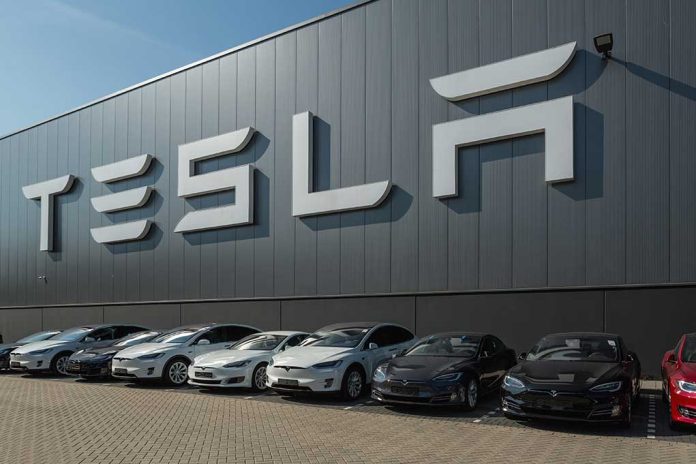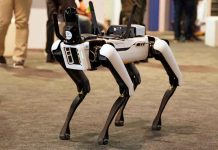
Tesla’s much-anticipated Robotaxi service stumbles out of the gate in Austin as Model Y vehicles demonstrate erratic steering behavior and cross double yellow lines despite Elon Musk’s assurances of stringent safety measures.
Key Takeaways
- Tesla launched its limited Robotaxi service in Austin with 20 Model Y vehicles available through an invite-only app at a flat fee of $4.20 per ride
- Despite operating in a carefully mapped “geofenced” area, vehicles have exhibited concerning navigation issues including erratic steering and crossing solid double yellow lines
- Each Robotaxi currently requires a Tesla employee in the passenger seat as a safety monitor, contradicting Musk’s earlier promises of fully autonomous operation
- Musk plans rapid expansion to over 1,000 Robotaxis in Austin within months and one million across the U.S. by 2026, despite current performance concerns
- The service faces scrutiny amid Tesla’s history of unfulfilled autonomous driving promises and ongoing federal safety probes into its driver assistance technology
Tesla’s Robotaxi Debut: Promise vs. Reality
After years of ambitious promises and missed deadlines, Tesla has finally launched its Robotaxi service in Austin, Texas. The program currently operates with 20 Model Y vehicles available through an invite-only Tesla app from 6 a.m. to midnight. Far from the fully autonomous future Elon Musk has been promising since 2016, each vehicle requires a Tesla employee in the front passenger seat as a safety monitor. The service operates exclusively in a limited “geofenced” area of South Austin that excludes the local airport, with rides costing a flat fee of $4.20 – a number likely chosen for its significance in Musk’s often meme-driven marketing approach.
“After nearly a decade of waiting, Tesla has launched a limited self-driving car service in the Austin, Texas, area,” stated company executives, including Musk.
This launch represents just a fraction of what Musk has repeatedly promised. In 2019, he boldly claimed Tesla would have one million robotaxis on the road by 2020 – a prediction that fell dramatically short. Now, Musk projects over 1,000 robotaxis will be operating in Austin “within a few months” and an ambitious one million across America by 2026. These claims appear increasingly questionable given the performance issues already surfacing in the carefully controlled current deployment.
Concerning Performance Issues Emerge
Despite operating in ideal conditions – a meticulously mapped area with a safety driver ready to intervene – Tesla’s robotaxis have already demonstrated troubling behavior. In one notable incident, a Model Y exhibited erratic steering at an intersection, jerking the wheel in a manner that suggested confusion about its intended route. Even more concerning, a robotaxi was observed crossing solid double yellow lines to enter a left turn lane – a basic traffic violation that raises serious questions about the system’s readiness for wider deployment.
“We are being super paranoid about safety,” stated Elon Musk, while discussing the robotaxi launch.
These issues align with what industry experts have long warned about Tesla’s autonomous driving approach. “It will work fine for perhaps hours at a time and then randomly make very serious mistakes in ways that are not necessarily repeatable,” said Sam Abuelsamid, a transportation analyst at Guidehouse Insights. Wired Tesla’s reliance on cameras rather than more expensive LIDAR and radar sensors – technologies embraced by competitors like Waymo – continues to generate safety concerns among autonomous vehicle experts.
Ambitious Expansion Plans Amid Growing Scrutiny
Tesla’s plan to rapidly scale from 20 vehicles in a controlled environment to hundreds of thousands of robotaxis nationwide reveals a troubling disconnect between current capabilities and future promises. The company aims to eventually deploy purpose-built “Cybercabs ” but currently relies on retrofitted Model Y vehicles. This rollout occurs against a backdrop of federal safety investigations into Tesla’s existing driver assistance systems, including multiple recalls and customer complaints about unpredictable behavior – hardly the confidence-inspiring foundation needed for a major autonomous vehicle deployment.
President Trump has previously praised American innovation in the autonomous vehicle space but has expressed concerns about job displacement in the transportation sector. The administration will likely need to balance supporting technological advancement while ensuring proper safety oversight as Tesla and competitors race to dominate this emerging market. With established players like Waymo already operating fully driverless services in multiple cities, Tesla’s late entry with a safety-monitored system underscores how far behind Musk’s company remains despite years of bold claims about its autonomous capabilities.





